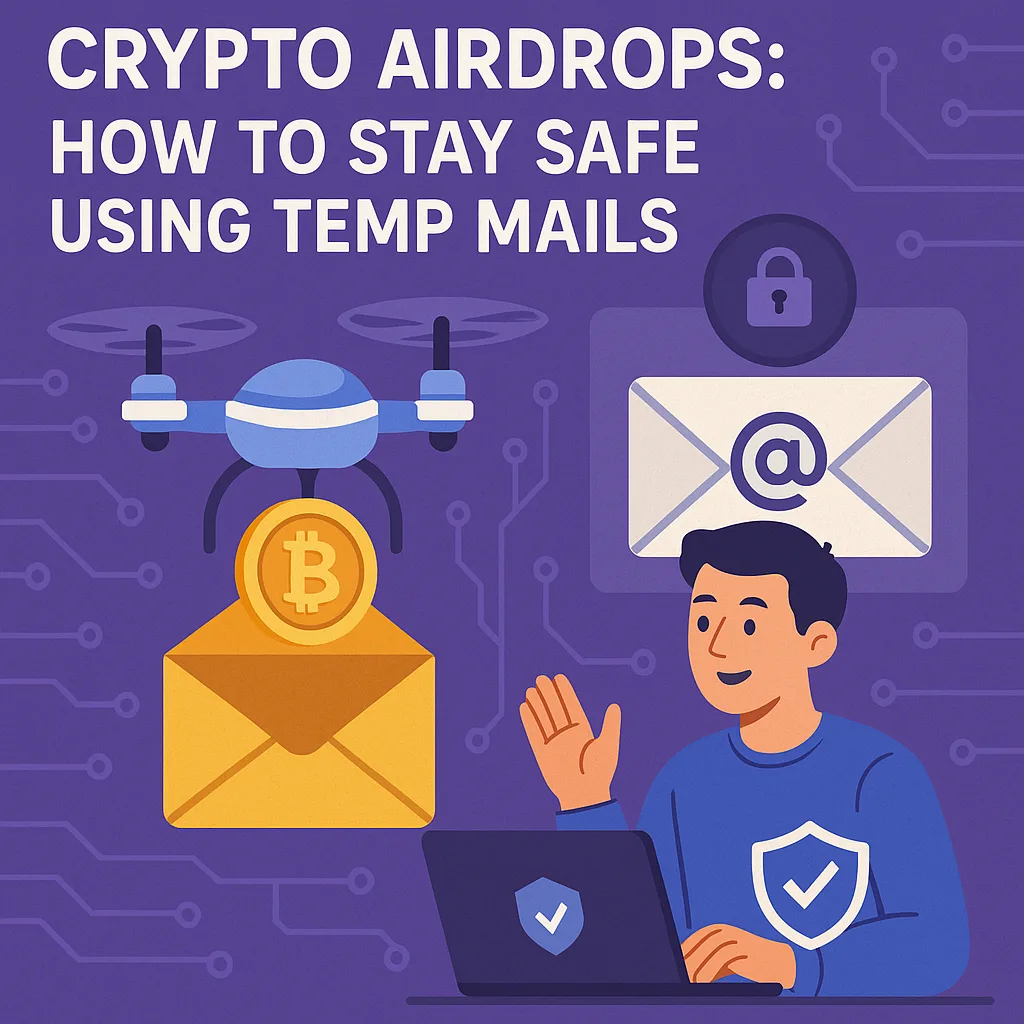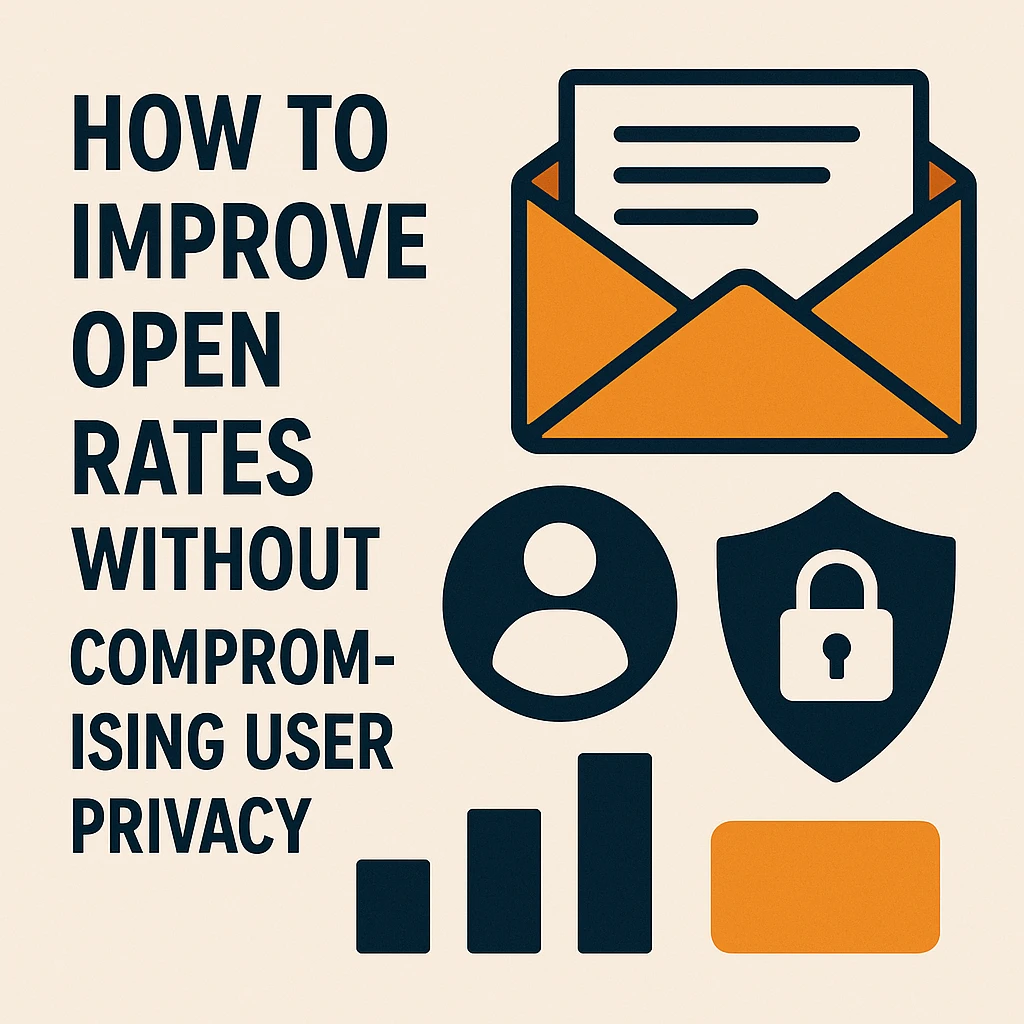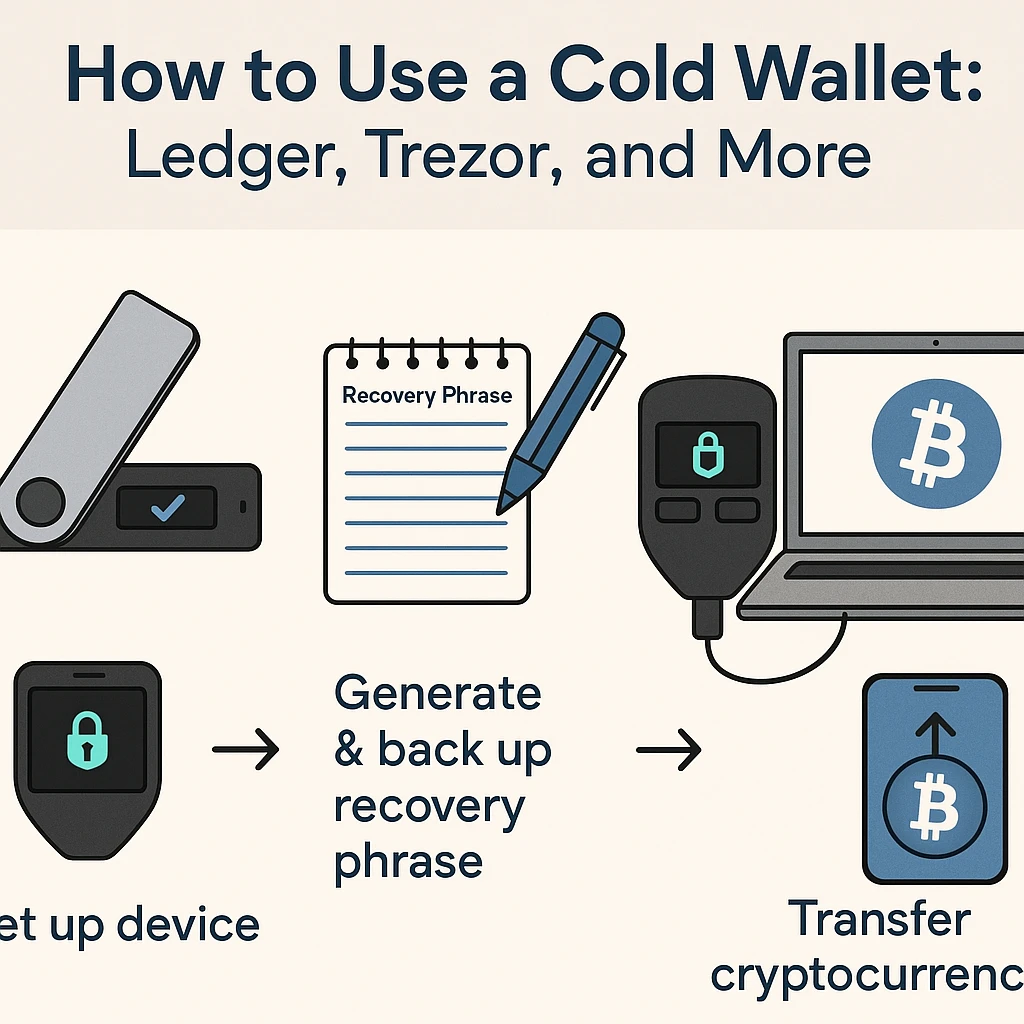Crypto airdrops are now a common way for blockchain projects to draw users, create communities, and distribute free tokens. Airdrops frequently give cryptocurrency users the chance to obtain early access to new tokens, sometimes valued at thousands of dollars, such as community-driven meme coins or high-value airdrops like Uniswap's UNI token.
But while these giveaways sound exciting, they also come with risks. Scams, phishing attacks, spam, and unwanted tracking are common in the airdrop scene. One way to protect yourself while still participating is to use temporary email services like 10minutesmails and mytemp-mail. These tools help you avoid sharing your personal email, minimizing exposure while claiming airdrops.
The definition of cryptocurrency airdrops, possible dangers, and ways to stay safe when navigating the world of blockchain freebies will all be covered in this blog.
What Is a Crypto Airdrop?
Blockchain-based projects use a marketing and distribution technique called a crypto airdrop to give away free tokens to a large user base. These tokens are usually given out for:
-
Completing simple tasks (following on Twitter, joining a Telegram group)
-
Holding a specific cryptocurrency in your wallet (snapshot-based airdrops)
-
Signing up for a newsletter or platform beta
-
Referring others to the project
Types of Airdrops:
-
Standard Airdrops – Free tokens for signing up or joining a list.
-
Holder Airdrops – Distributed based on wallets holding a specific token.
-
Bounty Airdrops – Require users to complete promotional tasks.
-
Exclusive Airdrops – Sent to selected users based on prior participation.
Although the goal of these campaigns is to raise awareness, they frequently ask for wallet addresses or personal information, which leaves room for spam, fraud, and privacy violations.
Risks Associated with Airdrops
Before you rush to collect your next free token, understand the dangers that can come with airdrops.
1. Phishing Attacks
A lot of phony airdrops are set up to steal your login information, private keys, or seed phrase. Your wallet could be empty in a matter of seconds if you fall for one.
2. Spam Overload
An email address is frequently requested on airdrop forms, and it is subsequently sold or used for unsolicited marketing. Unwanted cryptocurrency promotions may soon fill your inbox.
3. Data Harvesting
Some airdrops gather more data than is required. Users can be tracked and profiled using social media accounts, email addresses, IP addresses, and even wallet analytics.
4. Malware Links
Clicking on a malicious airdrop website or file could install spyware or keyloggers on your device.
5. Wallet Dusting
Scammers occasionally transfer small amounts of tokens to your wallet in order to monitor your activities or trick you into engaging with malicious contracts.
Clearly, airdrops are not all rainbows and free money. So how can you participate safely?
Why Use Temporary Email Services for Airdrops?
When registering for airdrops, temporary email services like mytemp-mail and 10minutesmails provide a simple way to maintain privacy. These services create disposable email addresses that can be manually removed or expire after a brief period of time.
Benefits of Using Temp Mail for Airdrops:
✅ Privacy Protection
You don’t have to give out your personal or work email, keeping your identity anonymous.
✅ Avoid Spam
Once you claim the airdrop, you can discard the temp email, avoiding future marketing emails or promotional spam.
✅ Reduce Attack Surface
By not linking your real email to crypto accounts, you reduce the chances of targeted phishing or impersonation attacks.
✅ Fast and Convenient
Services like 10minutesmails give you a working inbox within seconds, no signup required.
✅ No Tracking
Temp mails don’t associate your identity with your crypto activity, helping you stay pseudonymous.
Best Practices for Using Temp Mails with Airdrops
To make the most of temporary email services and minimize risk during airdrop participation, follow these best practices:
1. Use a Dedicated Crypto Wallet for Airdrops
Never claim airdrops using your primary wallet. Don't keep big amounts of cryptocurrency in your wallet; instead, make a separate one specifically for airdrops.
2. Cross-Verify Airdrops
Verify whether the airdrop is advertised on the project's official website or verified social media accounts before clicking on links or filling out forms.
3. Use 10minutesmails or mytemp-mail for Email Signups
These two services offer fast, disposable inboxes that work with nearly all sign-up forms.
4. Never Share Your Seed Phrase
Legitimate airdrops will never ask for your wallet’s private key or seed phrase. If they do, it’s a scam.
5. Avoid Downloading Attachments
Airdrops that ask you to download files or install wallets or browser extensions should be treated with extreme caution.
6. Stay Updated in Airdrop Communities
Join trusted airdrop Telegram groups, Twitter threads, or Reddit subs to read user feedback before participating.
7. Clean Up Regularly
Delete temp email sessions after use, and monitor your airdrop wallet for dust tokens or suspicious activity.
Examples of Safe Airdrops + Use Cases for Temp Mail
✅ Arbitrum (ARB) Airdrop
-
Distributed to users who used the Arbitrum Layer 2 network
-
Did not require email sign-up
-
Still, many phishing sites mimicked the claim site—users who used temp mail and verified official sources were safe.
✅ LayerZero Testnet Incentives
-
Required early user interaction and potentially email for beta notifications
-
Using mytemp-mail helped users maintain anonymity while testing apps
✅ NFT Mint Campaigns
Some NFT airdrops required email registration to mint. Temp mail let users participate without revealing real contact info.
Are There Any Downsides to Using Temp Mail?
While temporary email services are incredibly useful, be mindful of these limitations:
-
You might miss future project updates if the project sends follow-up links or tokens
-
Not all services accept temp mail domains (some have filters to block signups)
-
You can’t recover access to accounts created with temp mail if you lose the link or key
Tip: If the airdrop seems promising and legit, consider using an alias email or encrypted email service like ProtonMail.
The Role of Temp Mail in a Privacy-First Web3 World
User privacy needs to be protected as Web3 expands. The fundamental principles of decentralization and self-custody are in line with the use of temporary emails. They come in especially handy when:
-
Testing new dApps
-
Participating in testnet events
-
Joining waitlists or betas
-
Claiming low-value or unknown airdrops
Services like mytemp-mail and 10minutesmails are becoming essential tools in the privacy toolkit of crypto enthusiasts.
Final Thoughts
Crypto airdrops are thrilling chances to participate in cutting-edge blockchain initiatives and possibly win valuable tokens. However, the airdrop environment is also rife with data mining, tracking, and scams.
By using temp mail services such as mytemp-mail and 10minutesmails, you can minimize the risks and maintain control over your digital identity. Combined with a dedicated wallet and basic security awareness, temp mail can help you safely explore the world of Web3 giveaways.
Keep in mind that something is not always safe just because it is free. Enjoy airdrops without compromising your security, be cautious, and keep your privacy intact.




Leave a Reply